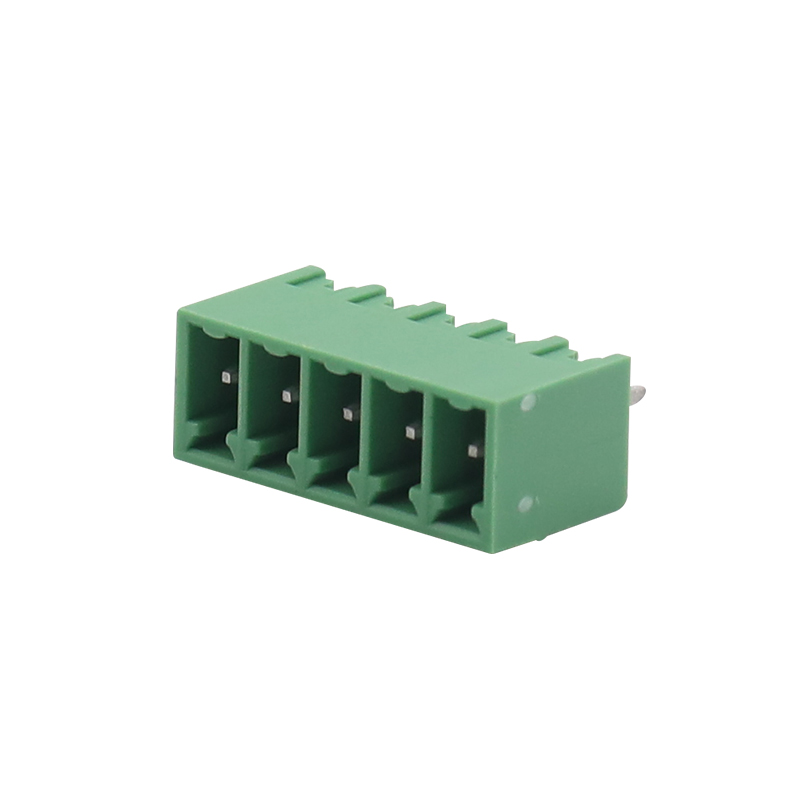Understanding Pluggable Terminal Blocks: A Reliable Solution for Electrical Connections
2025-04-03
Pluggable terminal blocks are essential components in modern electrical and electronic systems. They provide a secure and efficient way to connect and disconnect wires, making them ideal for industrial automation, control panels, and various electrical applications. Their modular design allows for easy installation, maintenance, and flexibility in wiring configurations. In this blog, we will explore the benefits, applications, and key features of pluggable terminal blocks.
What Is a Pluggable Terminal Block?
A pluggable terminal block is a type of electrical connector that allows wires to be easily inserted and removed without requiring complex tools. It consists of two main parts: a plug-in connector and a base terminal block. The plug-in connector houses the wiring, while the base remains fixed to a circuit board or panel. This design enables quick and reliable electrical connections in various applications.
Benefits of Using Pluggable Terminal Blocks
1. Easy Installation and Maintenance
The plug-and-play design allows users to quickly insert and remove wiring connections, reducing installation time and simplifying maintenance or upgrades.
2. Secure and Reliable Connections
Pluggable terminal blocks provide a firm and vibration-resistant connection, ensuring reliable electrical performance in demanding environments.
3. Space-Saving Design
These terminal blocks are compact, making them ideal for high-density wiring applications where space is limited, such as control panels and industrial automation systems.
4. Versatility and Flexibility
Available in different sizes, configurations, and wire gauges, pluggable terminal blocks can accommodate various wiring needs, including signal, power, and data connections.
5. Safety and Durability
Made from high-quality insulating materials, pluggable terminal blocks provide excellent protection against electrical shorts, mechanical stress, and environmental factors.
Common Applications of Pluggable Terminal Blocks
1. Industrial Automation
Pluggable terminal blocks are widely used in factory automation, control systems, and process monitoring equipment, ensuring reliable wiring for sensors, actuators, and controllers.
2. Power Distribution Systems
These terminal blocks facilitate efficient power connections in electrical panels, switchgear, and distribution boards.
3. Telecommunications and Networking
Pluggable terminal blocks help manage signal connections in telecommunications and networking systems, providing stable data transmission.
4. Renewable Energy Systems
Solar power systems and wind energy installations use pluggable terminal blocks to connect and manage electrical wiring efficiently.
5. Consumer Electronics and Appliances
Household electronics and appliances utilize pluggable terminal blocks for internal wiring, allowing for easy assembly and repair.
Key Features to Consider When Choosing a Pluggable Terminal Block
1. Voltage and Current Ratings
Ensure that the terminal block meets the voltage and current requirements of your application for safe and efficient performance.
2. Wire Gauge Compatibility
Check the supported wire size to ensure a secure and proper fit for your wiring needs.
3. Connection Type
Pluggable terminal blocks come in different connection styles, such as screw, spring-clamp, and push-in connections, each offering unique benefits in terms of ease of use and stability.
4. Material and Durability
High-quality insulating materials and corrosion-resistant metal contacts ensure longevity and reliable operation in harsh environments.
5. Mounting Options
Choose between PCB-mounted, DIN rail-mounted, or panel-mounted terminal blocks based on your installation requirements.
Conclusion
Pluggable terminal blocks are a crucial component in electrical and electronic systems, offering quick, reliable, and flexible wiring solutions. Their ease of use, durability, and space-saving design make them an ideal choice for industrial automation, power distribution, telecommunications, and renewable energy applications. By selecting the right pluggable terminal block for your needs, you can ensure efficient electrical connections and improve the overall performance of your systems.



